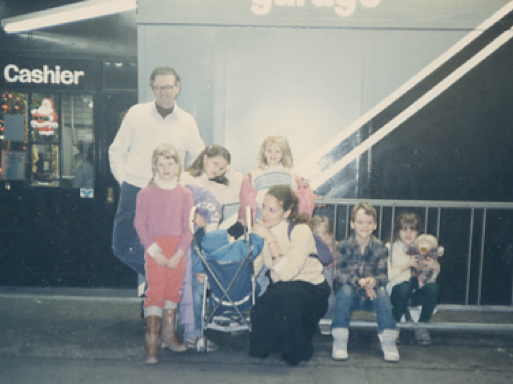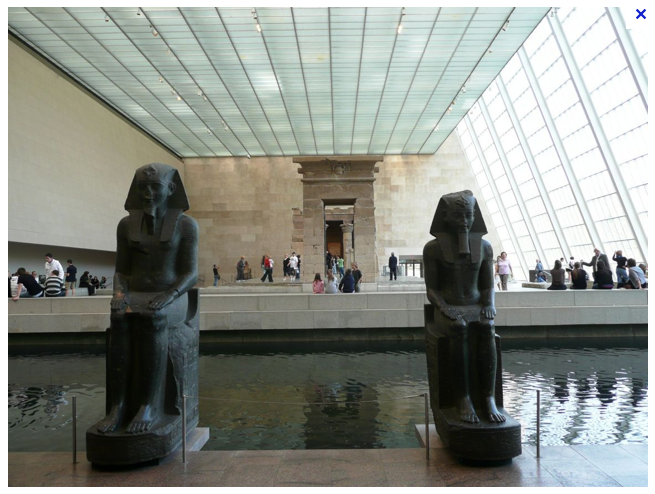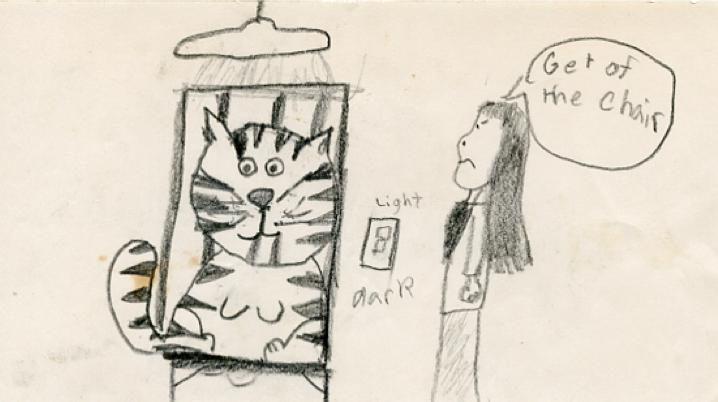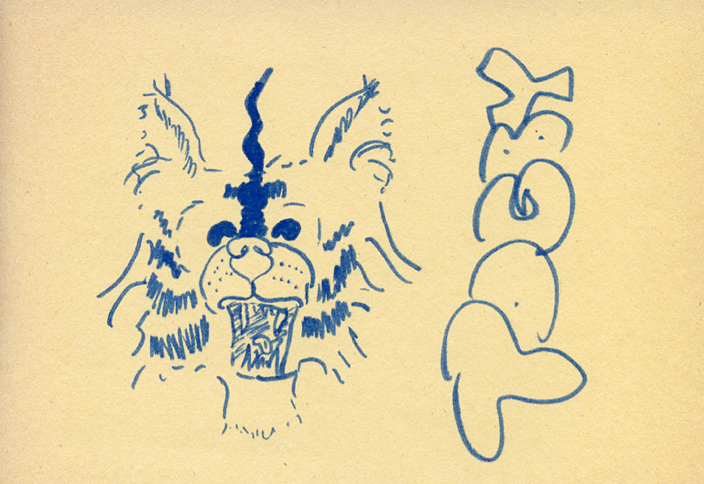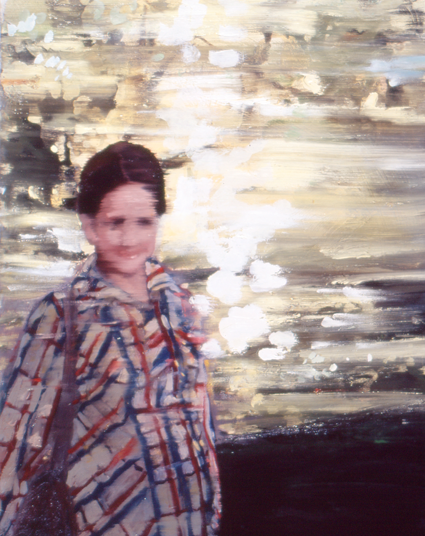Inspired by her childhood love of shrinky dinks, Garfield, Disney movies and bathtime, animator and artist Annie Poon has established herself as a premier paper stop motion animator. In fact, one of her films was acquired by the Museum of Modern Art in New York. In addition to capturing the most magical moments of childhood, Annie has turned her talents towards animating the most violent scenes in the Book of Mormon in her “Die Wicked Die” series. Annie’s new ebook, “Puppy’s Super Delicious Valentine’s Day Biscuits!” is available just in time for the holiday!
How did you choose to pursue art as a profession? Was it a choice at all, or something you felt compelled to do?
I’ve been working in paper stop motion for ten years now. It is a nostalgic medium for me because working with paper reminds me of childhood, when my twin sister Katie and I would play with paper.
We would draw characters on our Sacrament Meeting programs. We would rip them out and make them dance back and forth to each other’s laps. We would also stage puppet shows with our paper characters taped to straws in the window of our playhouse. Animating with paper is my way of continuing that paper play-acting.
We lived in a house in Connecticut, very close to New York City. Mom and Dad took all us kids all into New York at least once a year to wander through the galleries of the Metropolitan Museum of Art and get hot dogs at our favorite place, Gray’s Papaya. Here we are after a long day at the Met.
One of the most important days of my life was when my mom took me out of elementary school by myself to visit the Metropolitan Museum. She wrote a note to the school saying she was giving me an “artistic education”. At the museum, she coached me on painters’ names and started giving me nickels for each artist I could identify. I got to spend the money in the gift shop.
My parents also read us a captivating book called From the Mixed-Up Files of Mrs. Basil E. Frankweiler. In this book, a brother and sister run away from home to the Metropolitan Museum of Art. They hide in the bathroom at closing time from staff, sleep in the exhibits, bathe in the fountain, and steal money from the moat of the Temple of Dendur.
To this day when I go to the Met, I still imagine hiding in the bathrooms and scooping up money from the moat to pay for a visit to the gift shop.
Aside from the Met, my early influences were Garfield, Snoopy, the Ninja turtles, Garbage Pail Kids, and Charlie Brown. I copied everything I could get my hands on and built a drawing table in the basement next to the boiler room.
What was it about animation that appealed to you personally?
I always loved when my dad would come home Sunday nights, put up his feet in the big chair, and read the weekend version of the New York Times. I would always ask him to pass me the “funny paper” section and would devour every single comic. I liked how the comics didn’t necessarily have to be about something big, they just slowly inched a narrative forward or even stayed in one spot. My favorite strips, like Peanuts and Garfield, seemed like they were stuck in time and could just go on forever. And they really have!
I also loved all the Disney movies and even took notes in my sketchbook with a friend when we went to see “Beauty and the Beast”. My best friend and I even wrote letters to Disney asking advice about what to do to become Disney animators someday. We actually got an encouraging letter back!
Yes, we talked about becoming animators for a few years, but once I saw modern painting that was completely eclipsed. In high school my art teacher took us to the Museum of Modern Art and I saw paintings like ‘Autumn Rhythm’ by Jackson Pollock for the first time. I felt an incredible power coming from these paintings. I started reading the biographies of artists like Jackson Pollock, Michelangelo, Picasso, Frida Kahlo, and Georgia O’Keefe. There was a half-price bookstore within walking distance of my house and I started buying up monographs of all the great names.
I actually looked down on animation as too lightweight and silly, and placed painting at the top of a pyramid in my mind. Only when I started maturing as an artist did I realize that happiness and fun was a perfectly okay objective. I started to appreciate all those artists who adorn the walls of my imagination with cartoons, graffiti, animation, and design.
As for shrinky dinks, I did have an unusual love for them. Also for colorforms and stickers. They all consisted of cut-out figures that could interact with any background. They were like dolls but less bulky. I loved drawing paper backgrounds and animating my own drawn cut-outs against the paper with my hands.
This was Togby, my first cartoon character. My friend Catherine was so in love with him that she asked if she could be my agent. She delighted in telling people about him. It is only now as an adult that I would be able to admit to Catherine that Togby was actually copied from a book.
Here is a painting I made at in high school. It’s about hopes and dreams. It shows how what we create will take us into the world. The girl holds a fetus connected to a cord that escapes a bubble and ventures off into the universe. The world welcomes us with open hands. Each dotted line represents a different path we could take.
Instead of getting a part-time job, I sold drawings and paintings to friends to get spending money in high school and college.
After a term at BYU and some community college, I studied at the School of Visual Arts in Manhattan. My dream of living in New York had come true. I started making paintings that were inspired by my love of stickers, shrinky dinks, and free floating cut-outs. Seen in person they look like paper collages on canvas. Little did I know these collage-like forms would one day break truly free.
Eventually I faced a great conundrum. I started making paintings that talked about what painting couldn’t do. It couldn’t tell a story quite the way I wanted it to. For me, a painting was just one still image in frozen moment. So, I started painting frozen moments in time, with the eyes obscured the way you might think of a memory. Like this painting of my mother when she was pregnant with me.
I had one semester left of art school, and my husband suddenly said to me that instead of making these paintings, I should do something that reflected my personality. He asked if I could think back to a time when I was making something that expressed that joy and fun that he saw in me. Maybe, he suggested, I should go back to that. It took only one split second for me to remember my paper games with Katie.
The first project I made was called “In Love”. It took about two hours. It was a video recording of a flipbook that I made in the corner of my sketchbook. It shows me and my husband kissing. For the soundtrack, I kissed the back of my hand.
In Love from Annie Poon on Vimeo.
My great drawing teacher Lucio Pozzi asked me a great question. He said, “If you were creating something that everyone around you praised you for, but you had something in your heart that you always wanted to try, would you have the courage to put your current work aside and try your idea? Or would you rest on your laurels?” I said of course I would try it. This conversation convinced me that I needed to put painting aside for the time being.
The Roly Poly Pudding from Annie Poon on Vimeo.
Bathtime was a magical time to a kid with a big imagination and so when I put painting aside, I returned to those magical times with Katie. Katie and I would get in the bathtub, turn on the shower and imagine that the whole world had flooded, the tub was a boat, and that we were trying to survive out at sea by drinking rainwater tea and eating fish. I was just out of art school and this film was bought by the Museum of Modern Art in New York. It was one of my happiest moments.
What is something you’ve really struggled with in your life? How have you expressed that struggle in your art?
My struggle has been with my health. Without going into specifics, sometimes I find myself unable to work. That can last up to a few months when I have a bad bout. It leads me to deep sadness and confusion. I just have to chalk that up to experience and work like a mad woman when I find myself able to work again. Then inspiration hits like a ton of bricks and nothing is sweeter. I work till the early morning hours and still don’t want to go to sleep for fear of losing my inspiration. Now that I know my body better, I don’t take health and inspiration for granted and I don’t wait on executing a good idea. This animation, “Annie’s Circus”, deals with sadness and the loss of inspiration. A sleepwalker shuffles through the streets of New York City. This animation is partly inspired by the movie “The Last Unicorn” and by Alexander Calder’s CIRCUS.
Annie’s Circus from Annie Poon on Vimeo.
This next animation, “The Book of Visions”, was created for Mormon Artists Group. It is inspired by three books I read in high school that involved children receiving heavenly visions to guide their people. The three books are Black Elk Speaks (by Black Elk), Joan of Arc (by Mark Twain), and the Book of Mormon (translated by Joseph Smith). I believed that if God had sent angels to these teens, it meant that he took them seriously in spite of their youth. Reading about the accounts gave me a feeling of importance and they uplifted me. I knew that even though I was a teenager, I had great potential. And though I might struggle with teen angst, I knew I had a Father in Heaven who loved me unconditionally and would communicate with me through prayer and revelation just the way He did with these three youths. Their stories gave me self-confidence to get by in high school. This is my longest animation, it took a year to research and make.
The Book of Visions from Annie Poon on Vimeo.
Talk about your animations of Book of Mormon characters. Why do you think paper animation is an effective medium for telling the stories of the Book of Mormon?
When I was little my parents made sure to buy us the church’s illustrated comics of the scriptures. I loved reading these but always had a feeling that I was looking at a censored version of what really took place. The paintings were so calm looking even when the events described were outrageous. I started making my own action packed versions of these stories.
Now, making my own versions, I’m portraying the stories the way a teenager might really imagine them. They are also influenced by MTV culture and by the Simpsons, specifically the over the top violence of “Itchy and Scratchy”. I think paper animation is a good way to portray the Book of Mormon stories because it’s an entirely new way to portray them. I think if there’s any way to peak people’s interest in scripture study, I’m happy to do that.
The first one I made was for Mormon Artists group. It’s David and Goliath. Because they’re about the deaths of wicked men, I titled this project ‘Die Wicked Die’. Several of these films are currently on exhibit at the BYU Museum of Art.
Die Wicked Die series: David, Korihor, Ammon from Annie Poon on Vimeo.
These are, of course, just my own interpretation. For example, in this next animation about Nephi beheading Laban, I dressed Laban in a costume reminiscent of Lady Gaga’s spiked tops. I also made Nephi a lot less afraid of shedding blood than in the real story.
Die Wicked Die: Laban from Annie Poon on Vimeo.
This next short is from the “war chapters” of the Book of Mormon. In it, Teancum, the chief of the Nephite army, has to sneak into the camp of the rebel king at night: “And it came to pass that Teancum stole privily into the tent of the king, and put a javelin into his heart; and he did cause the death of the king immediately that he did not awaken his servants.” (Alma 51:34)
Die Wicked Die: Teancum from Annie Poon on Vimeo.
Shiz is a truly bloodthirsty Lamanite who sweeps down all in his path. One verse that most interested me is Ether 15: 29-31: “They had all fallen by the sword, save it were Coriantumr and Shiz, behold Shiz had fainted with loss of blood. …And it came to pass that after [Coriantumur] had smitten off the head of Shiz, that Shiz raised up on his hands and fell and after that he had struggled for breath, he died.”
Die Wicked Die: Shiz from Annie Poon on Vimeo.
Would you describe the process of making one of your films? It seems like it would be an incredibly labor intensive process. How do you find the patience to work in this medium?
First, I pick a story that’s been carried in my heart for a long time. Then, I design the characters and identify the appropriate medium, be it watercolor, marker, etc. I want to make sure the medium matches the mood, for example I used florescent highlighters for the Book of Mormon violent sequences. I find or create the music. Then I close my eyes and listen to the music again and again, seeing which key images come to mind. I jot down those images and they become my “money shots”.
I fill in the rest of the scenes and time everything to the beat of the music. Then comes the tedious part: the animation. I can only animate about 5 seconds a day. After I film the day’s footage, I usually have to go back and refilm because my husband has thought of some gag we could have included or I realize a way to make it more visually effective. An animation of a minute long could take me a month, not including the music. After I make an animation, I take time off because I’ve generally neglected everything else and need to let my brain unwind. The animations drive me bonkers to make because of the tedium. My husband has nicknamed me “the Ghost” because I can only work for 15 minutes or so before I come out of my office and wander slowly around the house shaking my hands and trying to loosen up and get the courage to make the next couple of seconds of the story. It is maddening. But the final result is so mesmerizing to me that I am addicted to making them. I have to make very strict calendars and deadlines to keep myself moving at all.
Do you see your work as overtly spiritual? Are you a “Mormon artist” or an artist who happens to be Mormon? Apart from the Book of Mormon thematic elements, what role does spirituality play in your art?
I guess it just depends on who is looking at my work. I let them decide. If it’s someone in the New York art scene, I’m just an artist who happens to be Mormon. Although I may make work about the gospel, I don’t expect a different treatment for being Mormon. If I’m at BYU presenting my work, the context changes and I become a Mormon artist. I am happy to claim the label “Mormon” because I think we are a great bunch and I want to inspire other Mormons to follow their own dream of being an artist. I feel that by making art which delves into the gospel, I am inviting others to do the same. I don’t try to be “spiritual”, I just try to be me: a person who happens to make some of their art about the gospel.
What advice would you give to other female Mormon artists who are considering art as their professional pursuit?
I welcome freelance jobs and carefully consider requests for animations. But I am not willing to sacrifice my work if someone asks me to make a piece for them which is not in my style and pays little money. I feel like my time is better spent doing something I think is amazing for no money but will bring me positive attention in the long run. I think it’s important to be realistic and find something else you really enjoy to pair up with your art practice, such as design and illustration.
I remember the day in Kindergarten when my teacher held up a chart that had pictures of people from different professions. I remember a fireman, a secretary, an artist, a doctor, etc. My teacher said that when we grew up we could choose to be any one of those things. Even though I was only five, I took her very seriously. I remember going through a moment’s reflection and thinking I had two choices. I was already good at writing songs on the piano and I just loved to draw. I knew if I started focusing on one right then, I could be ahead of the game when I grew up. It sounds calculating and crazy for a five year old but I swear it’s true! So I picked art. Since then I have always felt like my identity was to be an artist. I enjoy it so much that I don’t notice the difficulty and diligence it takes. It’s all I want to do. Sundays can be hard for me because I don’t make art on that day. But I know the Lord inspires me doubly during the following week.
As far as advice to other Mormon artists, who consider art as their professional pursuit, I would say don’t expect to pay the rent with the art. Sorry if this hurts anyone’s feelings. I don’t measure my success in dollars. But I would rather make mind-boggling art and do little jobs on the side like design and illustration to make extra cash than put a strain on that holy time in the studio when inspiration, not money, directs me. The best work I make is when I feel isolated and unnoticed, and just feel free to play. And that’s something people notice about my art, that the sense of freedom and experimentation. Then people who see it will talk about it and bring opportunities to you. I feel like the time to create is sacred and needs to be free from financial calculation. Once you have expressed yourself by creating a body of work, then you take off the artist hat and put on the marketing hat. Then it’s time to put the word out, post online, on your personal website, on Etsy, invite friends to your studio, etc. That is just as exhilarating. But I still can’t pay all my bills every month with my art. More power to you if you can!
Would you share your Valentine’s Day treat with us?
In the spirit of Valentine’s Day, I would like to show you an animation I made based on my comic character, Puppy and his crush, the beautiful Miss Duck. The comic first started appearing three years ago on the website FredFlare.com and is now being made into a series of 12 ebooks with the first one out today on iTunes. Oh Puppy! is about a little pup in love in the Big Apple.
Oh Puppy! from Annie Poon on Vimeo.
At A Glance
Annie Poon
 Location: New York, NY
Location: New York, NY
Age: 35
Marital status: Married
Occupation: Artist and animator
Schools Attended: School of Visual Arts
Languages Spoken at Home: English
Favorite Hymn: “In Humility, Our Savior”
On The Web: www.anniepoon.com and www.ohpuppy.net
Interview by Neylan McBaine. Portrait by Alisia Packard.
At A Glance

